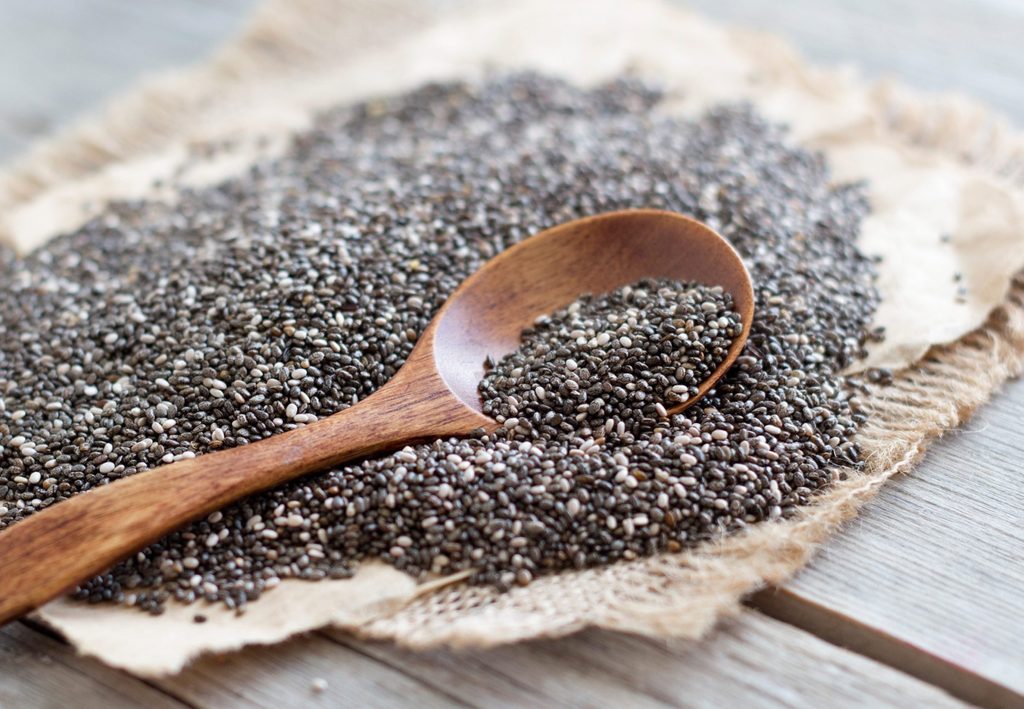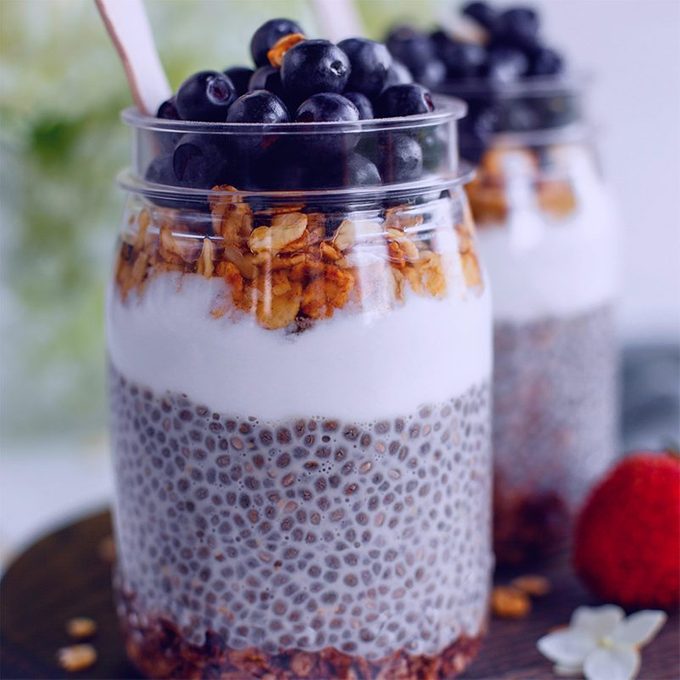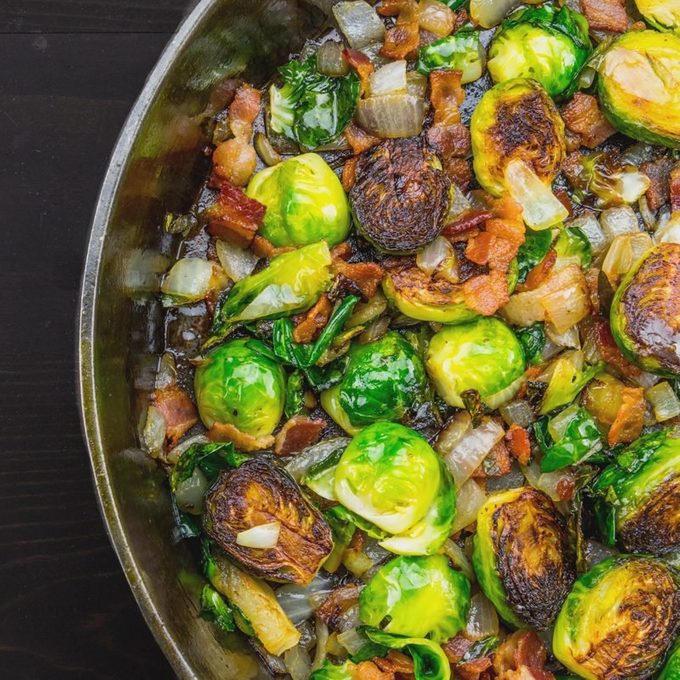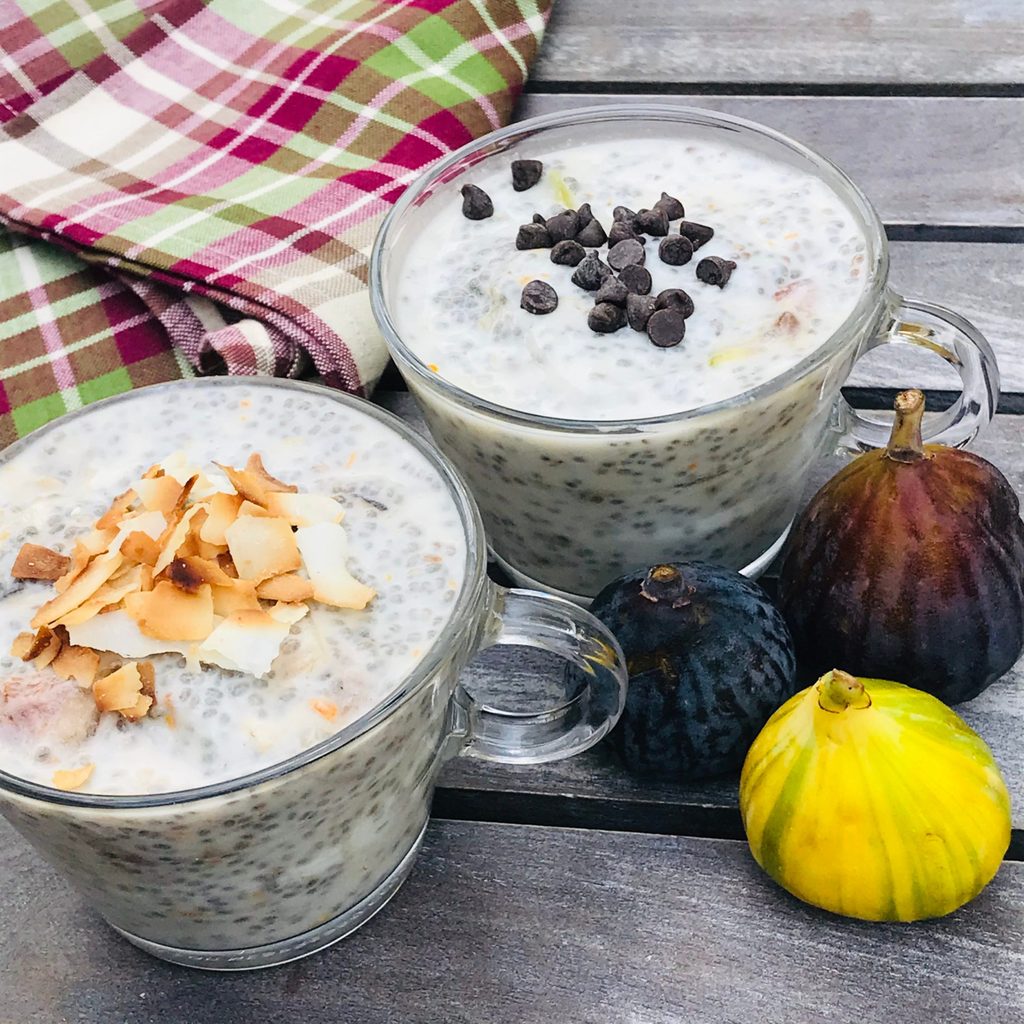Should You Be Eating Chia Seeds? Here’s What Nutritionists Say

Here’s what you need to know about their nutrition.
If you’re a fan of chia seeds, you’re hardly alone. These tiny seeds are becoming so popular, sales are expected to reach more than $88 million by 2024, according to Mordor Intelligence, a marketing research firm. That’s a 5.8 percent increase from 2018.
Chia seeds are beloved by nutrition experts, says Jenna Gorham, RD, a registered dietitian and licensed nutritionist in Montana. It’s easy to see why: Two tablespoons of chia seeds have about 140 calories, nearly six grams of protein, about eight grams of fat (including omega-3s), and 11 grams of mostly soluble fibre. Plus they’re full of vitamins, minerals, and antioxidants.
And they’re incredibly versatile. Aside from their popularity as a topping for cereal and yogurt, “chia seeds can be used in many ways,” says Susan Bowerman, RD, a registered dietitian in Los Angeles.
They can thicken pudding or overnight oats, as well as boost fibre in baked goods. “They can also be mixed in a 1:3 ratio with water to make an egg replacement that works well for baking,” she says.
If you’re seeking chia’s ample health benefits, but worry they’ll ruin the taste of your dish, fret not. “Chia seeds are incredibly mild,” says Gorham. “You’ll hardly notice their taste, but depending on how you use them, you may notice the small seeds or gel-like texture.”
Here’s everything you need to know about chia seeds, including their nutritional value, health benefits, plus easy chia seed recipes to make at home.
(Related: 10 Foods with More Fibre Than Broccoli)
Different types of chia seeds
“Chia has grown in popularity due to its numerous nutritional properties and health benefits,” says Akua Woolbright, national nutrition director for Whole Cities Foundation, the nonprofit arm of Whole Foods. They’re easy to digest. And, unlike flaxseed, chia seeds don’t have to be ground to improve absorption.
Chia seeds are derived from the plant Salvia hispanica L. A major food crop in Mexico and Guatemala as early as 3500 BC, they were offered up to Aztec gods in religious ceremonies.
There are white and black chia seeds and they have similar nutritional content. “The black seeds tend to be a bit smaller,” says Bowerman. “Some people find them more palatable when used as a topping on cereal or yogurt, when compared with the white ones.” They’re basically interchangeable in recipes, she adds.
Chia seed benefits
In addition to their nutritional content, chia seeds offer many health benefits.
For starters, chia’s fibre and healthy fat content may slow blood sugar spikes and help maintain healthy cholesterol levels, says Bowerman, echoing the results of a study published in 2019 in Nutrients. “They’re also a decent source of calcium, a nutrient many people don’t get much of.”
What’s more, chia seeds may also help reduce chronic inflammation. A small study of 30 people with type 2 diabetes, published in Diabetes Care, found that consuming about four tablespoons of chia seeds a day for 12 weeks led to a reduced risk for cardiovascular disease. By comparison, the researchers found people with diabetes who ate wheat bran did not see a similar benefit.
(Related: Should You Try The Anti-Inflammation Diet?)
Chia seeds and weight loss
Looking to shed pounds? Chia seeds might be a good dietary addition.
Part of the reason chia seeds help with weight loss is because they swell and add bulk to dishes, potentially making them more filling and satisfying, says Bowerman. Chia seeds’ fibre content also “supports proper digestion, elimination, and a healthy gut,” adds Woolbright.
(Related: Healthy Gut, Happy Life: 10 Ways to a Better Microbiome)
Risks and side effects
Chia is popular and can be added to a variety of dishes, but there can potentially be too much of a good thing.
“If you’ve never eaten them, it’s probably a good idea to start gradually with one teaspoon and work your way up to one to two tablespoons to give your body time to adjust to the fibre content,” says Bowerman. “Eating too much could cause mild digestive upset, as would be the case from eating too much of any type of fibre in one sitting.”
Best way to eat chia seeds
Chia seeds are great blended into smoothies, as well as on salads as toppings, baked into bread or muffins, blended with yogurt, or added to fruit juice, says Melissa Nieves, RD, a registered dietitian at Kemtai, a personal training app. “In short, the possibilities are endless,” she says. “I eat them by themselves.”
They’re particularly useful for vegans. “Chia is a great ingredient for plant-based eaters not only because of the protein content, but also because it offers 15 percent of the daily recommended value of iron and calcium, which can often come from animal-based foods,” says Gorham.
In fact, chefs looking for an egg replacement when baking can substitute chia seeds, instead. Gorham advises combining one tablespoon of chia with three tablespoons of water, mixing and letting sit for five minutes to create an egg-white consistency.
Chia seed pudding is popular due to its consistency, with myriad chia pudding recipes available. “When mixed with liquid, chia seeds absorb it and become plump and soft—perfect for making pudding,” Gorham said.
Here are a few great recipes featuring chia seeds—everything from breakfast to dessert recipes.
Blueberry Vanilla Chia Seed Pudding

This antioxidant-rich breakfast pudding recipe is courtesy of celebrity chef Mareya Ibrahim, author of Eat Like You Give A Fork: The Real Dish on Eating to Thrive.
Four servings
Ingredients:
- 2 cups unsweetened almond milk or other nondairy milk
- 1⁄2 tsp. pure vanilla extract
- 1 cup fresh or frozen blueberries
- 2 tsp. granulated stevia or monk fruit extract
- 6 tbsp. chia seeds
- 1 1⁄2 tbsp. unsweetened shredded coconut
Instructions:
In a blender, combine the almond milk, vanilla, blueberries, and stevia. Put 1 1⁄2 tbsp of the chia seeds into each of four mason jars. Evenly distribute the blueberry-milk mixture over the top of each and stir or shake well. Seal the jars and refrigerate for at least six hours or overnight, until thickened. Top each with about 1 teaspoon of the coconut and enjoy cold.
(Also, try our Super Simple Vanilla Chia Pudding with Berries.)
Balsamic Roasted Veggies with Toasted Turmeric Chia Seeds

This roasted veggie recipe is courtesy of Ibrahim.
Four to six servings
Ingredients:
- 2 tbsp. Dijon mustard
- 1⁄4 cup balsamic vinegar
- 2 tbsp. raw coconut oil, melted
- 2 tbsp. coconut amino acids
- 1 tsp. ground white pepper
- 1 medium head cauliflower, cut into bite-size florets
- 1 medium head broccoli, cut into bite-size florets
- 2 cups halved Brussels sprouts
- 2 tsp. ground turmeric
- 1 tsp. chia seeds
- Instructions:
Preheat the oven to 375 degrees F. In a large bowl, whisk together the mustard, vinegar, coconut oil, amino acids, and white pepper. Add the vegetables and toss to coat with the dressing. Spread the vegetables evenly over a baking sheet. In a small dry skillet, toast the turmeric and chia seeds over low heat for two minutes, taking care not to burn them. Remove from the heat and sprinkle the spices over the vegetables. Bake for 30 minutes, or until the vegetables are golden brown.
(Also, try our Lentil and Brussels Sprout Salad with Creamy Chia Dressing.)
Overnight Orange Figgy Chia Pudding

Perfect for breakfast, as a snack or dessert, each serving of this pudding—courtesy of Elaine Magee, RD, The Recipe Doctor—offers more than 10 grams of protein and six grams of fibre.
One servings
Ingredients:
- 1/4 cup milk or milk alternative
- 1/4 cup Greek vanilla yogurt or plant-based yogurt
- 1 chopped fresh fig, about 1/4 cup (dried fig, chopped, can also be used)
- 1 tbsp. chia seeds
- 1/2 tsp. orange zest
- 1 tbsp. semi-sweet mini chocolate chips (shredded or shaved toasted unsweetened coconut can be substituted)
Instructions:
In a serving bowl or glass, gently stir the milk and yogurt with the chopped fig, chia seeds, and orange zest. Cover the dish and refrigerate. After about 60 minutes, stir to distribute the seeds evenly and return the covered dish to the refrigerator to sit overnight (or eight hours). Sprinkle mini dark chocolate chips (or toasted coconut) over the top and enjoy.
Next, try our Energizing & Nutritious Vegan Ginseng Chia Pudding.




